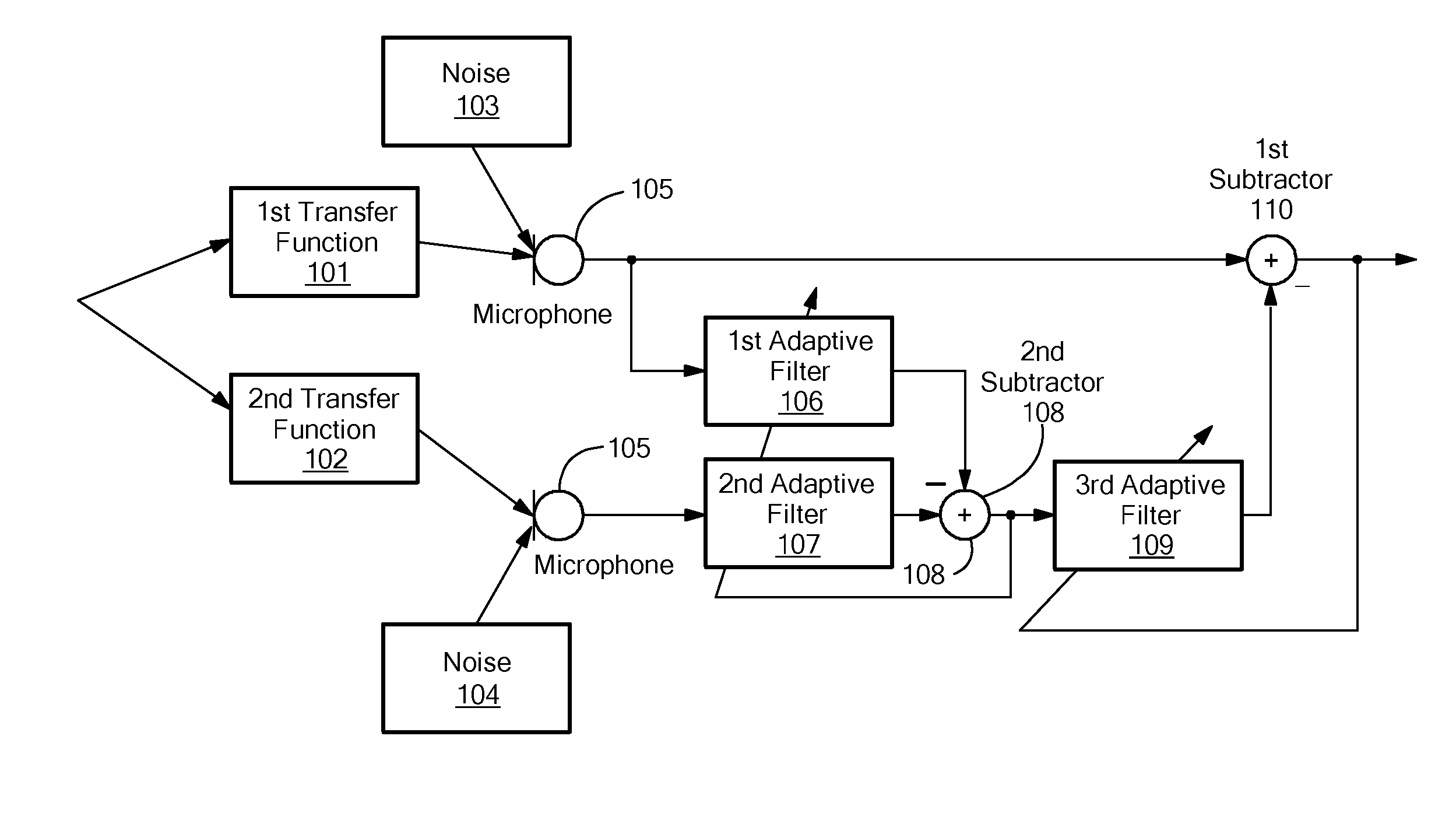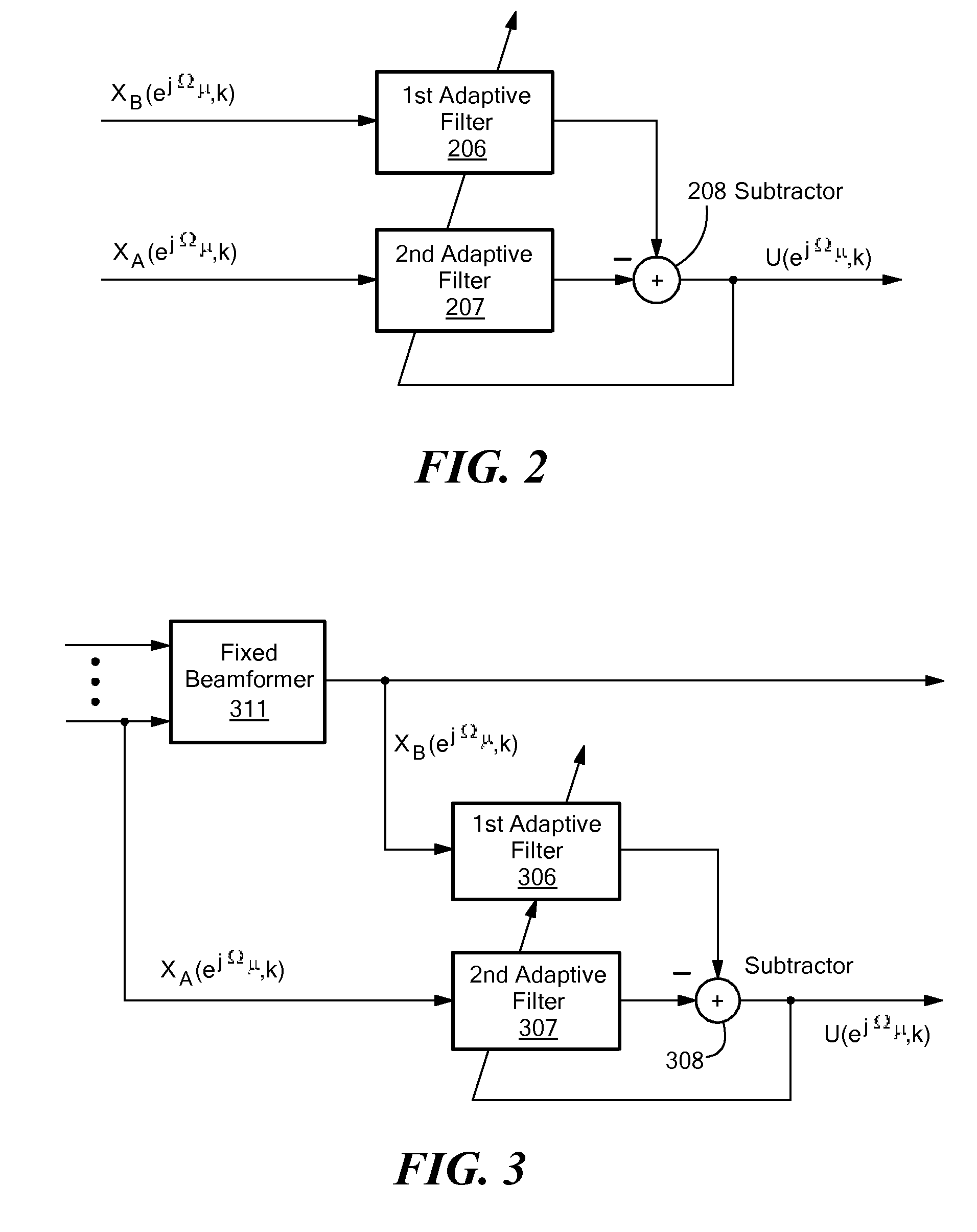Method for Determining a Noise Reference Signal for Noise Compensation and/or Noise Reduction
a noise reference signal and noise compensation technology, applied in the direction of instruments, electrical transducers, sound producing devices, etc., can solve the problems of impaired noise reference signal, voice signal interference, and often impaired audio signal quality, so as to reduce noise and minimize the noise component of the first audio signal
- Summary
- Abstract
- Description
- Claims
- Application Information
AI Technical Summary
Benefits of technology
Problems solved by technology
Method used
Image
Examples
Embodiment Construction
[0092]To improve the signal quality of an audio signal, a method for noise compensation may be performed (see e.g. “Adaptive noise cancellation: Principles and applications” by B. Widrow et al., in Proc. of the IEEE, Vol. 63, No. 12, December 1975, pp. 1692-1716). In particular, the audio signal may be divided into sub-bands by some sub-band filter and a noise compensation method may be applied to each of the sub-bands. The method for noise compensation may utilize a multi-channel system, i.e. a system comprising a microphone array. Microphone arrays are also used in the field of source localization (see e.g. “Microphone Arrays for Video Camera Steering” by Y. Huang et al., in S. Gay, J. Benesty (Eds.), Acoustic Signal Processing for Telecommunication, Kluwer, Boston, 2000, pp. 239-259).
[0093]FIG. 4 shows the general structure of a so-called “general sidelobe canceller” which comprises two signal processing paths: a first (or lower) adaptive signal path with a blocking matrix 412 an...
PUM
 Login to View More
Login to View More Abstract
Description
Claims
Application Information
 Login to View More
Login to View More - R&D
- Intellectual Property
- Life Sciences
- Materials
- Tech Scout
- Unparalleled Data Quality
- Higher Quality Content
- 60% Fewer Hallucinations
Browse by: Latest US Patents, China's latest patents, Technical Efficacy Thesaurus, Application Domain, Technology Topic, Popular Technical Reports.
© 2025 PatSnap. All rights reserved.Legal|Privacy policy|Modern Slavery Act Transparency Statement|Sitemap|About US| Contact US: help@patsnap.com



